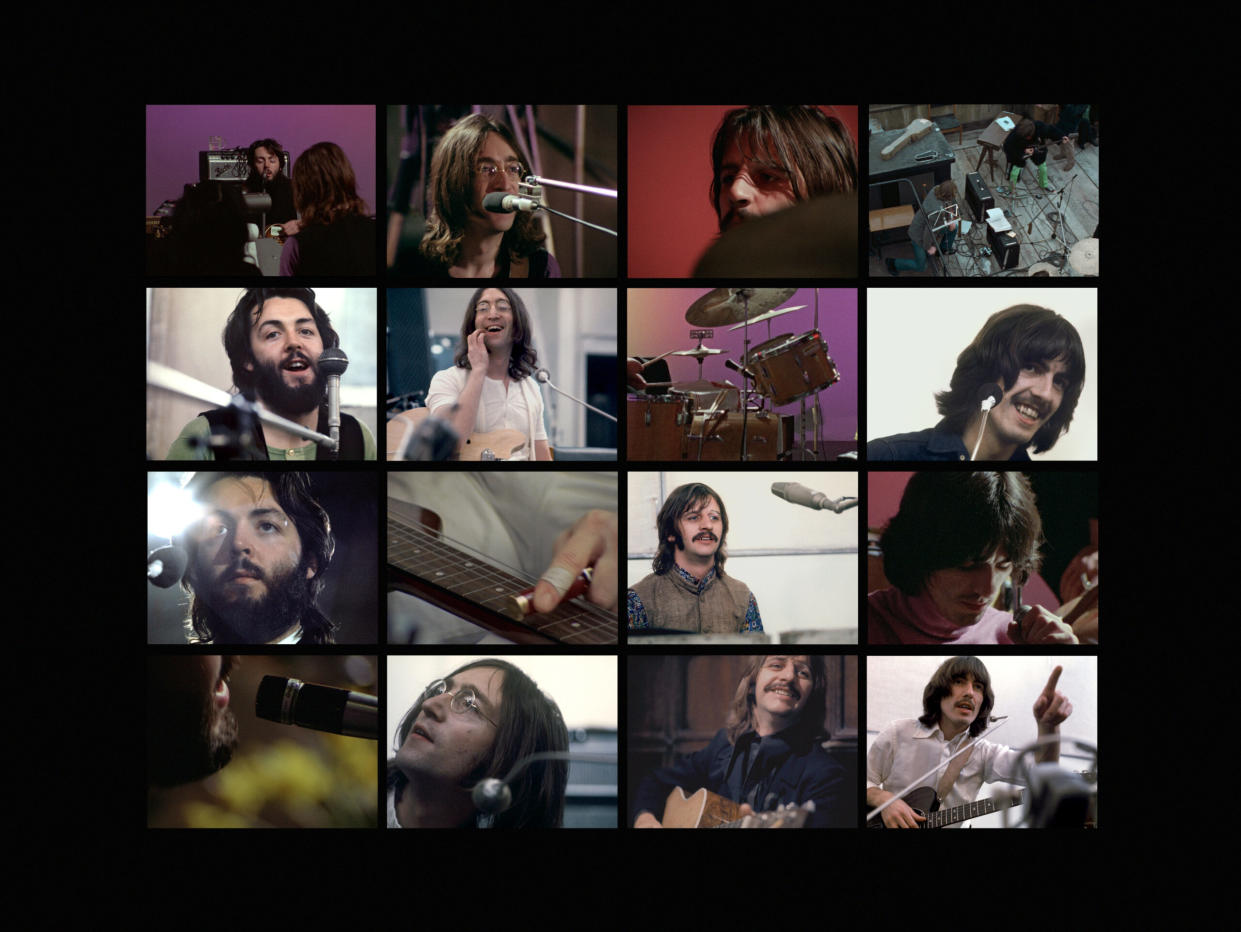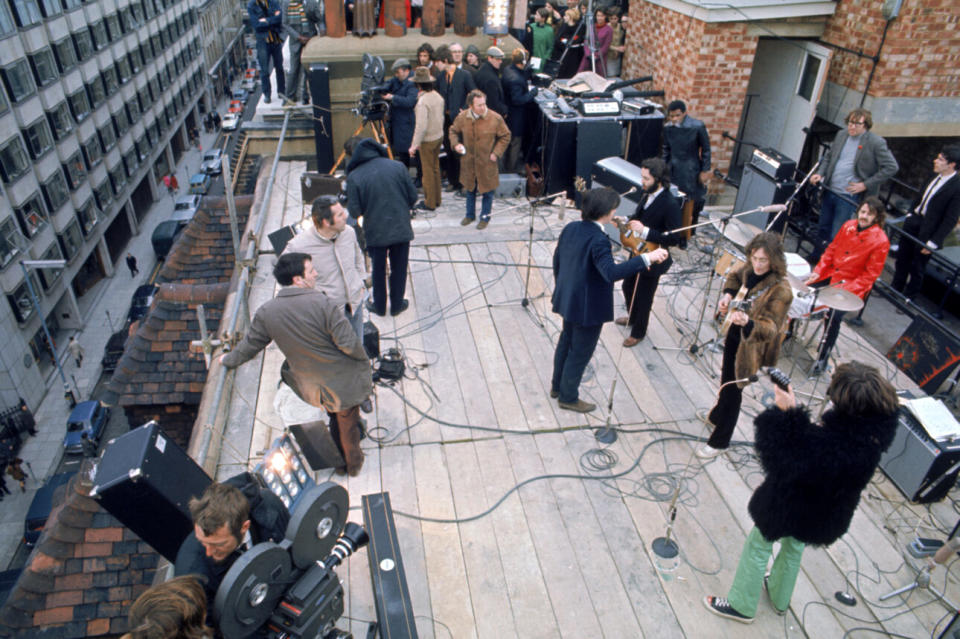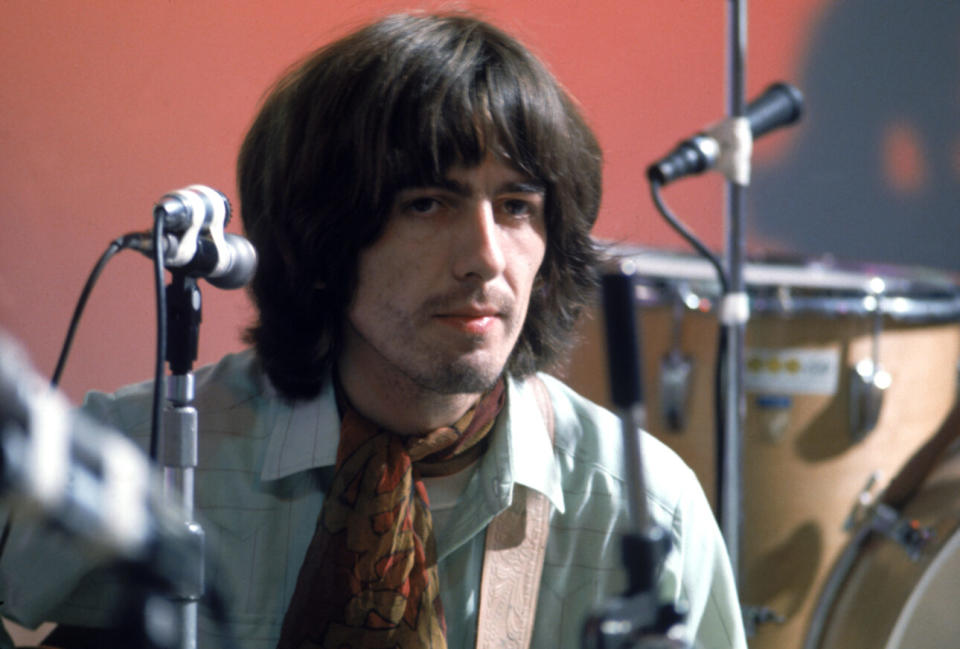Director Michael Lindsay-Hogg On Let It Be‘s Long Road To Redemption

- Oops!Something went wrong.Please try again later.
- Oops!Something went wrong.Please try again later.
- Oops!Something went wrong.Please try again later.

If you’re a music fan with a grasp on rock history, you’ve surely heard the Beatles‘ Let It Be — but you’re unlikely to have ever seen it. That’s because the film companion to the group’s final 1970 album of the same name has been out of circulation for 50 years and maligned forever since in Beatles lore — an unintended victim of having been released less than a month after John Lennon, Paul McCartney, George Harrison and Ringo Starr split up for good.
At first, the idea seemed simple enough. Directed by Michael Lindsay-Hogg, who’d made prior music videos with the Beatles and oversaw the Rolling Stones’ Rock and Roll Circus concert film, Let It Be was intended as a documentary of the group rehearsing for a televised concert — their first since retiring from the road in 1966. When the Beatles decided they actually didn’t want to perform live after all, Let It Be became a chronicle of the band working on new songs in January 1969, both at the cavernous Twickenham Studios and their then-new setup in the basement of the Apple building in London.
More from Spin:
Many of those songs were eventually released on Let It Be the album, while others were saved for Abbey Road, which was recorded several months afterward but released first. Without a proper climax to the raw, largely context-free film, the parties and visiting keyboardist Billy Preston all agreed that they’d trudge up to the Apple roof and plug in for a few numbers — a joyous, rock’n’roll flashback to a more carefree time before the business of being the Beatles sadly put an end to the Beatles as a functioning creative entity. In that way, Let It Be was unfairly seen as the last gasp of a culture-shifting band at a time when it appeared they could barely even get on the same page about their own music, and before it long, it was relegated to the dustbin of rock history.
So it went for decades, until Lord of the Rings mastermind and hardcore Beatles fan Peter Jackson started reinvestigating and restoring hours upon hours of Lindsay-Hogg’s original footage. This material formed the basis for the revelatory three-part 2021 Disney+ series Get Back, which dispelled numerous myths about the supposedly rancorous Let It Be sessions to instead reveal a band still capable of making transcendent music. In particular, Jackson was able to isolate surreptitious audio recordings once thought unusable, bringing to life a reasoned, heretofore unheard conversation between Lennon and McCartney in the wake of Harrison’s sudden exit from the group seven days after the project began (he returned shortly thereafter).
Ahead of Let It Be‘s return to Disney+ tomorrow (May 8) in the same enhanced form as the Get Back footage, SPIN hopped on Zoom with Lindsay-Hogg, who remains spry and jovial at 84, to discuss the film’s long road to redemption, how Jackson’s Get Back complements Let It Be and what it was like to be a fly on the wall while songs such as “Get Back,” “The Long and Winding Road” and “I’ve Got a Feeling” came to life.
Can you put into words the magic of being in the room while the Beatles are coming up with the songs that wound up on Let It Be basically out of thin air? And, moreover, they’re playing around with music that wouldn’t be released until the next album.
Michael Lindsay-Hogg: Well, I didn’t know about the next album after that, because that hadn’t been created yet. And although I loved the Beatles as we all did and do, I had a different kind of job to do. Which is, although I was present and thrilled to be there, I realized, amongst other things, that no one had ever shot the Beatles rehearsing before that. And so I thought that I’m in an unusually fortunate position, but it was a position of responsibility where I had to be alert to what was going on. In other words, I wasn’t just there as a friend and the cameras could sit around and do whatever they wanted to do. I very much was a worker as well as an admirer. I didn’t have as much time to think about it, because I was thinking about how to capture what they were doing rather than enjoying it — although I did, too.
Let It Be came out at the worst possible moment, right after the Beatles had broken up for good. It seems like the film was simply a victim of bad timing, but I’d imagine that wasn’t much consolation for you.
Yeah. I mean, if you’re a director, you do some things that give you lingering pain, or you do some things that give you lingering pleasure. When it got taken off the market in 1974, I was sad. Not for me so much, but if you make a movie or direct a play or something, it’s kind of like you’re making a child. Not to sentimentalize it, but you’re spending a lot of time on it and you’re watching it grow. You’re very responsible for the way it’s growing, so you have a lot of yourself invested in it, especially when it’s such a weird project like a Beatles documentary, which there hadn’t been any of before, and there’d been very few musical documentaries in the same way up to that point.
I really have been advocating for 50 years for it to come out again. In the ‘80s, it looked like it could come out again. I spoke to Paul about it a lot, because I did videos with him for Wings as well. He’d say, ‘Yeah, I hope it will. I like it.’ It’s just there’s some internal complications, blah blah blah. Once we came into the ‘90s, it didn’t look like it would really have any future, because Apple the company, not the Beatles so much, were looking at other ways of promoting Beatles music and Beatles projects.
That went on until the early part of the 21st century, when Peter Jackson got involved with constructing Get Back. It looked like maybe Let It Be would come out again, because early on when he and I met, I said, how would you describe what you’re doing, Peter? He said, ‘Well, really what I’m doing is making a documentary about the making of a documentary.’ Not only did he do that wonderfully, but he also figured out some technical things over there in New Zealand, which enormously helped the restoration of Let It Be both visually and audially.
If you’d had the technology in 1969 to hear every word that Paul and John said in that scene where the microphone is in the flower pot in the cafeteria, which we do hear in Get Back, do you think the band would have allowed it? Or would that have been too raw of a moment to include?
No one has asked that before. They were pretty okay with everything that I was doing in Let It Be. They would have separate opinions. Sometimes the separate opinions would coalesce into a band opinion, but I had very little interference from them.
You know the famous sequence when Paul and George are talking, and Paul says, I hear myself trying to get at you, and George says, ‘I won’t play at all?’ They never mentioned that. They never said, ‘People won’t like us and we’re not that kind of band that talk like that’ because for them that was the standard operating procedure. They always had disagreements about how they’re gonna play, like actors rehearsing a play. Why are you saying a line like that? Well, I don’t want you to say a line like that. OK. I think, for them, since it resolved well that George came back, they probably would have been okay with it. But that’s projection.
I know, certainly, that by the time we come to 2023 in New Zealand, well, they are OK because John is dead, although Sean, his son, was involved in choices. Paul is a wonderful man. He was a wonderful boy, and he’s a wonderful man. He knows who he is, but he also knows he’s a human being who possibly makes mistakes or errors. I know he was happy. Otherwise, it probably wouldn’t have been in the movie. I mean, yes, it would, because Peter had the cut, but I think he was happy with that.
I’d like to think it would have been OK, but in the end, we didn’t have George leaving, because we didn’t have the technology when I bugged the flower pot (laughs) to get the vocal track. We didn’t have that episode, so I was able to go fairly directly from John and Yoko waltzing at Twickenham to [the band then rehearsing at] Apple. I’d like to think they would have been alert and mature enough to think this is valuable, but, you know, it’s 55 years later.

What do you think Let It Be says about the Beatles, both as people and as musicians?
Well, I’m not a musician, so I’m a fan more than I’m gonna be able to tell you about the open B chord or whatever. But it shows how dogged they were when working on a song and how perfectionist they were about getting the modulation and the harmonies right. There’s that sequence early on when Paul is saying, it should come down like this, like he’s directing his song. They weren’t writing together anymore, particularly. One of them would come in with the song and give the chords to the band, like John with ‘Across the Universe.’
In terms of who they were at that time, they were changing. They’d been four tough kids from Liverpool who got together as teenagers. They honed their craft in a street in Hamburg which was either a brothel or a bar — just the kind of place you want to be when you’re 19 or 20! And then, the world changed, and they became quite rightfully who they were and who they are. But what was happening when we were doing Let It Be was that they weren’t 22 or 23 anymore. They were 28, 29, 27, and they weren’t touring anymore. They weren’t living in each other’s pockets anymore. They were deciding on how they wanted to look at the next 10 years of their lives — their marriages, their partners, what kind of music they wanted to make. Did they want to spend all that time with just their former bandmates and friends?
John was certainly going in a new direction with Yoko. She was guiding him or helping to prod his imagination, which didn’t need a lot of prodding. You know the album Two Virgins? I mean, that was not a Beatles album (smiles). He would move on as an artist very much under the influence of Yoko, which is what he was looking for. He didn’t want to have only his Liverpool background. He wanted to have something else avant-garde, maybe. Ringo wanted to work in movies. George was very much wanting to have his songs understood. And then there was Paul. You can’t stop him. All through his life, even in the hardest times, he will always as soon as he can go back to making music. Music for him is his gift. It’s our gift, but it also is his salvation, I think.
They all were starting to go into different directions, and that’s exactly when I caught them to do Let It Be — when they aren’t the Fab 4 anymore. They’re the other ones. You’ve made me think.
What makes you most proud about the fact that this film is finally back out into the world and available for people to see who maybe didn’t even know it existed?
Well, I’m thrilled. I’ve had ups and downs emotionally about it for a long, long time. 50 years is a long, long time. Sometimes, people don’t get 50 years. When we’ve been working on it, Peter over in New Zealand and the director of photography, Tony Richmond, and me in Los Angeles, I saw it coming together in pieces. It’s like making a wonderful dinner, and now it’s on the table. You’ve got your knife and your fork beside you, and you’re gonna have this wonderful experience. I went through dark times about it, because I knew it was good. When I say I knew it was good. I knew if it got to have a life again, people would be interested. I think they’d be pleased by it. I think they’d be moved by it. And I think by the end, when you get the four of them on the roof playing together like they’re teenagers, they’re truly happy to be with each other again, playing to an audience which is 100 feet below them. So, it goes out with an incredible bang. Plus, even if you’re a screenwriter, would you have written at the end of the movie John Lennon saying, I hope we passed the audition? Because that came from God, you know? If there is one, that line came from God.

To see our running list of the top 100 greatest rock stars of all time, click here.

